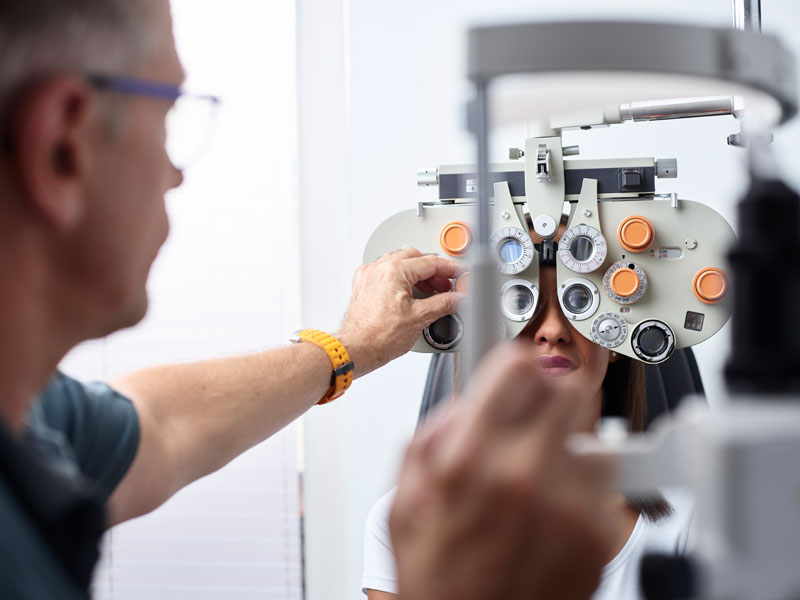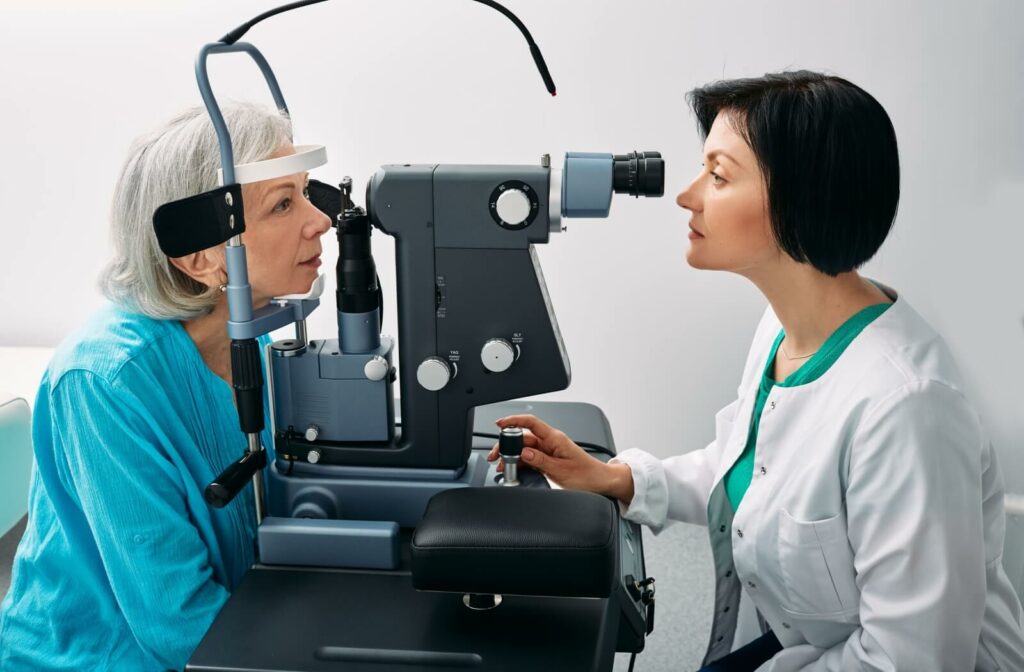Discover the most effective Optometrist Chino for Comprehensive Eye Care
Discover the most effective Optometrist Chino for Comprehensive Eye Care
Blog Article
Exploring the most up to date Technical Improvements in Optometry and What They Mean for Eye Doctors
In the ever-evolving field of optometry, recent technological advancements are improving just how professionals come close to eye care. From the precision of Optical Comprehensibility Tomography to the nuanced understandings used by AI-driven analysis tools, these technologies are establishing new requirements in patient evaluation and treatment. Teleoptometry is positioned to redefine accessibility, making sure that know-how goes beyond geographical restrictions. As these innovations penetrate the practice, eye doctors are faced with the difficulty of welcoming these devices to improve individual end results. The inquiry continues to be: how will these technological shifts redefine the duties and duties within the profession?
Advancements in Diagnostic Tools
Advancing the area of optometry, innovations in diagnostic tools have transformed the method eye care specialists evaluate and diagnose eye conditions and aesthetic disabilities. The previous years has actually observed significant technical advancements, allowing more precise and comprehensive examinations. Optical Comprehensibility Tomography (OCT), for instance, gives high-resolution cross-sectional photos of the retina, permitting the early discovery of illness such as glaucoma and age-related macular degeneration. This non-invasive imaging technique has actually ended up being important in contemporary optometric method.
An additional trick technology is the intro of advanced corneal topography systems, which map the surface curvature of the cornea with precision. These tools are particularly useful for suitable call lenses and diagnosing corneal problems. Furthermore, electronic retinal imaging has actually transformed traditional ophthalmoscopy, supplying detailed, scenic sights of the retina that facilitate thorough visual examinations.
The growth of wavefront aberrometry has actually also been essential, enabling the analysis of refractive mistakes with unequaled precision (Optometrist Chino). This modern technology helps in personalizing rehabilitative lenses and enhancing medical results for refractive surgical treatments. Jointly, these diagnostic advancements empower eye doctors to deliver remarkable patient care, ensuring early intervention and customized therapy techniques, eventually boosting aesthetic health and wellness results
AI in Individual Administration
Structure on the structure of advanced analysis devices, the incorporation of man-made knowledge (AI) in patient administration stands for a transformative jump for optometry. AI systems are significantly utilized to boost effectiveness, precision, and customization in individual care. By examining substantial quantities of data, AI can recognize patterns and anticipate prospective ocular problems, allowing eye doctors to customize interventions much more efficiently. This capacity is essential in managing chronic eye illness such as glaucoma and diabetic person retinopathy, where very early detection and continual surveillance are vital.
In addition, AI-driven systems promote streamlined person interactions and administrative procedures. Automated organizing, online appointments, and personalized follow-up plans not only boost client complete satisfaction however likewise optimize time management for professionals. These systems can triage clients based on the seriousness of their problems, guaranteeing that those in essential demand get punctual focus.
Additionally, AI boosts decision-making by offering optometrists with evidence-based suggestions and therapy paths. By incorporating information from digital health records, AI tools offer understandings that inform scientific decisions, minimizing the threat of errors and boosting person outcomes. As AI continues to develop, its role in person administration will likely broaden, improving the landscape of optometric treatment.
Advances in Retinal Imaging
In the realm of optometry, retinal imaging has actually experienced impressive technical advancements that are improving analysis capabilities and patient treatment. Advancements such as Optical Comprehensibility Tomography (OCT) and fundus photography have revolutionized exactly how eye doctors assess the retina and envision. OCT, in particular, gives high-resolution, cross-sectional photos of the retina, allowing for the detailed exam of its layers. This ability is indispensable for very early detection and administration of problems like glaucoma, diabetic retinopathy, and age-related macular deterioration.
Improved imaging methods like OCT angiography are more refining diagnostic precision. This non-invasive technique maps blood flow in the retina, providing essential insights into vascular health and wellness without the need for color injections. Furthermore, adaptive optics technology is being integrated into retinal imaging systems to correct ocular aberrations, providing unmatched photo clarity. Such advancements assist in the recognition of minute page retinal changes that could indicate disease development.
Moreover, developments in fabricated intelligence are boosting retinal imaging by allowing computerized analysis of huge datasets. These systems aid eye doctors in recognizing patterns indicative of pathology, therefore enhancing analysis accuracy and effectiveness. Jointly, these technologies are transforming retinal imaging right into a cornerstone of contemporary eye care, enhancing outcomes and increasing restorative opportunities.
Teleoptometry's Expanding Function
Teleoptometry is significantly becoming an important part of eye treatment, driven by developments in electronic interaction and diagnostic devices. This is especially advantageous in underserved and rural locations where accessibility to specialized eye care is often limited.
The assimilation of artificial intelligence (AI) more boosts teleoptometry, allowing the analysis of aesthetic data and helping in the discovery of eye problems such as glaucoma and diabetic retinopathy. AI-powered algorithms can quickly translate complicated imaging information, giving eye doctors with useful understandings that boost professional decision-making.
Furthermore, teleoptometry sustains continuity of treatment with seamless combination with digital health records (EHRs), enabling optometrists to maintain thorough client backgrounds. This makes sure that patients get tailored and consistent treatment also when talking to various practitioners.
Despite these advantages, obstacles stay, consisting of making certain data security and taking care of patient expectations. Teleoptometry represents a considerable stride in the direction my website of more available, reliable, and patient-centered eye treatment. As innovation advances, its duty is poised to expand better.

Future Trends in Eye Treatment
A myriad of innovative fads is set to reshape the future of eye care, driven by technical advancements and the advancing needs of clients. One considerable fad is the integration of expert system (AI) in diagnostics, which guarantees to boost the precision and effectiveness of eye examinations. AI formulas can examine substantial quantities of information from retinal images, possibly identifying problems like diabetic retinopathy and glaucoma earlier than traditional techniques.
In addition, personalized medicine is acquiring traction in optometry, with genetic screening educating personalized therapy strategies. This method aims to maximize individual end results by customizing treatments to individual hereditary accounts. Wearable innovation, such as smart contact lenses, is also on the horizon, supplying real-time monitoring of intraocular stress or sugar degrees, thus supplying constant understandings right into ocular and systemic wellness.
The fostering of augmented truth (AR) and online reality (VR) in training and individual education is another arising fad. These innovations use immersive experiences that can improve understanding and abilities both for clients and eye doctors. As these fads evolve, eye doctors have to stay abreast of technological advancements to supply cutting-edge care, making sure improved patient end results and contentment in the vibrant landscape of eye treatment.
Verdict

Jointly, these diagnostic improvements encourage optometrists to deliver superior patient treatment, making certain very early intervention and tailored therapy techniques, inevitably boosting aesthetic health end results.

As these technologies continue to progress, eye doctors have to adapt and integrate them right into practice, eventually maximizing workflow effectiveness and boosting the requirement of eye treatment supplied Source to patients.
Report this page